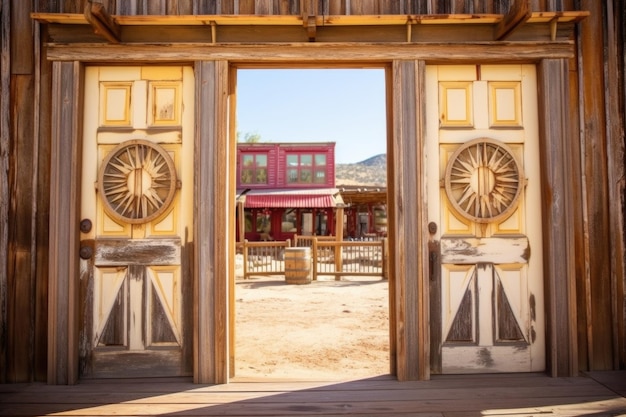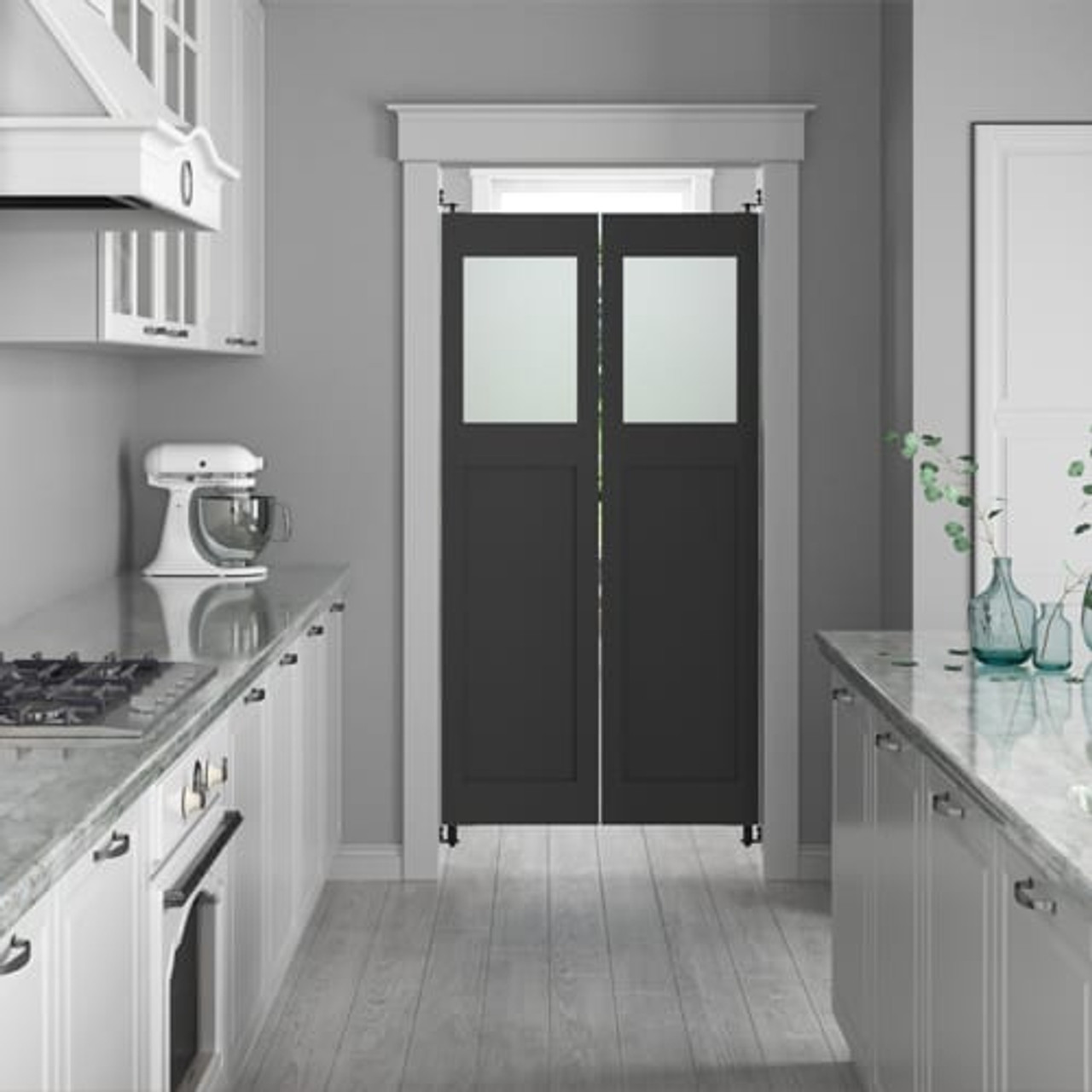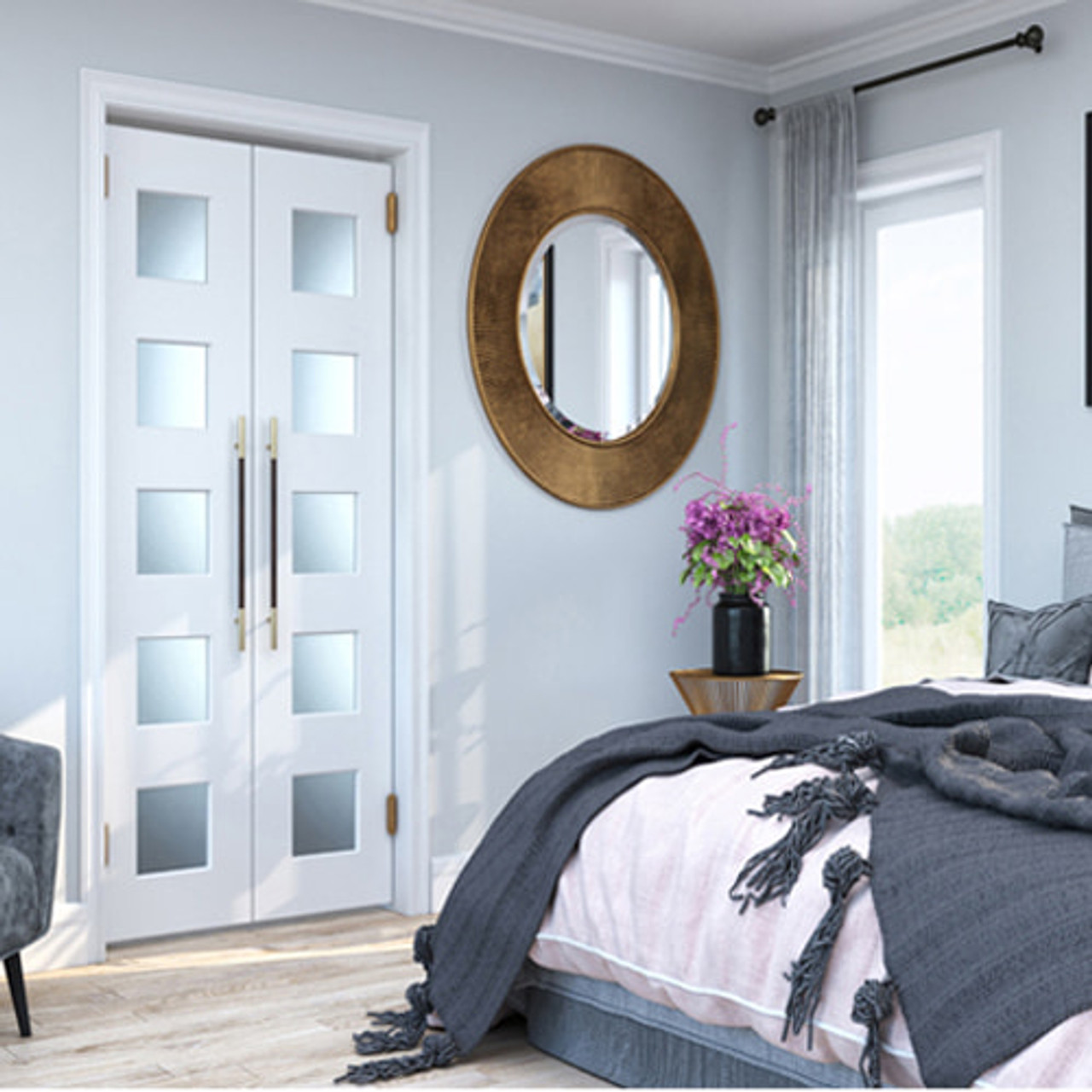The Transformation Of Saloon Doors From Old West Necessity To Modern
The Transformation Of Saloon Doors From Old West Necessity To Modern
Saloon doors, also known as swing doors or batwing doors, have a long history that dates back to the Old West era.
Originally invented in 1880 by an American inventor named H.H Littell, these unique doors were originally used in saloons and other drinking establishments. The purpose of these half-doors was to allow patrons to enter and exit without having to open heavy full-length doors while holding drinks in their hands.
In this article, we will explore the transformation of saloon doors from a practical necessity in the Old West to a modern design element found in homes and businesses today.
What Is the Purpose of Saloon Doors?

The primary purpose of saloon doors was to serve as a practical solution for patrons entering and exiting drinking establishments in the Old West. In the 1800s, most saloons were crowded and filled with smoke from cigars and cigarettes. This made it difficult for customers to enter and exit while carrying drinks without spilling or causing interruptions.
Saloon doors solved this problem by allowing patrons to simply push through the swinging doors with their feet, hands, or elbows, keeping their hands free to carry drinks or weapons. The design also allowed for better air circulation, helping to clear out some of the smoke-filled rooms.
Aside from being functional, these half-doors also added a level of privacy for patrons inside the saloon. The swinging doors acted as a barrier, preventing outsiders from seeing inside and potentially causing trouble.
Steps For Transformation Of Saloon Doors From Old Eest Necessity To Modern

There were several key steps that led to the transformation of saloon doors from a practical necessity in the Old West to a modern design element found in homes and businesses today.
Adaptation to New Environments
As cities expanded and drinking establishments became more varied, saloon doors found new uses outside the traditional saloon setting. Restaurants and cafes started adopting similar designs to maintain a casual yet stylish entryway.
This adaptation helped preserve the functional charm of saloon doors while integrating them into modern commercial environments.
By allowing for open visibility and easy access, these doors facilitated a seamless flow between indoor and outdoor spaces, marking their transition from old-west necessity to a viable design choice compatible with urban architecture.
Evolution of Design
The original swinging half-doors of the Old West underwent significant design evolution, incorporating newer materials like metal, glass, and contemporary wood finishes.
Designers experimented with various styles, adding stained glass and intricate carvings to offer both aesthetic appeal and functionality. This evolution allowed saloon doors to fit seamlessly into different architectural styles, whether rustic, vintage, or modern.
By blending older motifs with modern materials, these doors transitioned smoothly across time, leaving their mark on an array of design environments and showcasing their adaptability.
Popularity in Western Films
Westerns films played a crucial role in popularizing saloon doors beyond their practical function. These iconic doors became synonymous with the genre, serving as a hallmark for saloon scenes filled with intrigue and drama.
The cinematic portrayal left an indelible mark on public imagination, transforming saloon doors into a symbol of frontier life and adventure.
This association fueled interest and nostalgia, encouraging architects and homeowners to adopt the design in various modern contexts, thereby strengthening their cultural significance beyond mere utility.
Incorporation into Modern Design
Modern designers have embraced saloon doors as versatile interior elements, incorporating them in places ranging from kitchens to bedrooms. Their swinging mechanism offers easy transitions between spaces while preserving privacy when needed.
Open floor plans benefit from these doors as they complement flexible, transitional zones in a home.
Additionally, saloon doors in contemporary settings often serve as conversation starters, merging historical appeal with current trends. This integration demonstrates the door’s aesthetic and practical versatility, proving its enduring relevance in modern design languages.
Revival of Traditional Aesthetics
With today's trend towards vintage and rustic aesthetics, there has been a resurgence in traditional design elements, including saloon doors.
Many homeowners now seek to revive classic looks, incorporating period-appropriate details to enhance the character of their spaces. Whether in country homes or urban lofts, saloon interior doors provide a nostalgic touch that echoes a simpler past.
The revival emphasizes hand-crafted details and authentic materials, bringing back the charm and elegance of bygone eras while highlighting the doors' storied heritage and timeless appeal.
So these were the steps that transformed saloon doors from functional necessities in the Old West to a symbol of adventure, and eventually, a versatile design choice in modern spaces.
Does Your Space Need Saloon Doors?

Saloon doors may have started as a practical solution for crowded saloons, but they have evolved into more than just functional half-doors. Today, they are used in various spaces such as restaurants, bars, homes, and even offices.
So how do you know if your space needs saloon doors? The answer depends on your design preferences and needs.
If you love the rustic or vintage aesthetic and want to add a touch of old-world charm to your space, then saloon doors could be a great addition. They also work well in open floor plans where flexibility and privacy are desired.
Additionally, if you're looking for an interesting and unique design element that can serve as a conversation starter, then saloon doors are a great choice. They offer a nostalgic touch and add character to any space.
On the practical side, saloon doors are perfect for areas with high foot traffic as they allow for easy movement without the need to open and close traditional doors constantly. They also work well in small spaces where traditional doors may take up too much room when opened.
Is Saloon Doors a Style Staple?
Saloon doors have come a long way from their humble beginnings as a practical solution for crowded saloons. Today, they are considered a style staple by many designers and homeowners.
Their versatility and adaptability make them suitable for various design styles, including rustic, vintage, modern, and even industrial. They add character to any space and can serve as a focal point or complement existing design elements.
Moreover, with the rising trend of open floor plans and flexible living spaces, saloon doors offer an excellent solution for seamless transitions between rooms while preserving privacy when needed.
In commercial spaces like restaurants and cafes, saloon doors not only add to the overall aesthetic but also serve as a functional solution for managing foot traffic.
Their cultural significance and association with Western films have also solidified their status as a style staple, making them a popular choice in both residential and commercial design projects.
Can Saloon Doors Fit Into Any Design Aesthetic?

Yes, saloon doors can fit into any design aesthetic with the right approach. The key to incorporating them successfully is to choose the right style and material that complements your overall design.
For a rustic or vintage aesthetic, opt for traditional wooden saloon doors with hand-carved details and finishes like stained glass. These will add a touch of old-world charm to your space.
In modern or industrial spaces, metal or glass saloon doors are a great choice. They offer a sleek and contemporary look while still retaining the swinging mechanism of traditional designs.
For a more eclectic look, you can mix and match different materials like wood and metal or combine traditional and modern designs.
It's also essential to consider the size and placement of saloon doors in your space. They work well as room dividers, closet doors, or even pantry doors. With their versatility, there are endless possibilities for incorporating saloon doors into any design aesthetic.
FAQs
How have swinging saloon doors evolved from their origins in the Old West to modern interior design?
Swinging saloon doors have transformed from a practical solution in the Old West to a stylish element in today's interior design. Originally used to separate spaces while allowing easy passage, these doors now incorporate modern materials like olive wood to match existing decor. Their ability to create distinct areas without fully closing off a room remains a popular feature in contemporary homes.
In what ways do swinging cafe doors differ from traditional exterior doors?
Swinging cafe doors, unlike traditional exterior doors, are designed to swing both ways, providing convenience and an open feel between separate spaces. While exterior doors require a sturdy door frame and often include features like electric garage door openers, cafe doors focus on interior charm and accessibility, often complementing existing decor with their unique design.
How can integrating a hidden door or false doors enhance modern door architecture?
Incorporating a hidden door or false doors into modern door architecture can add intrigue and functionality to a space. These designs can cleverly conceal storage areas or passageways, creating an illusion of seamless walls. By using materials such as ancient stone doors or olive wood, these features can harmonize with the existing decor while adding a touch of mystery and sophistication.
What role do automatic doors and revolving doors play in today's home design?
Automatic doors and revolving doors bring a futuristic and convenient touch to home design, contrasting the rustic appeal of swinging saloon doors. While automatic doors offer hands-free access and are ideal for high-traffic areas like a pet door, revolving doors are typically used in commercial spaces to manage airflow and add architectural interest. Both styles enhance the functional and aesthetic elements of modern door architecture.
Conclusion
In conclusion, saloon doors have come a long way from their humble beginnings in the Wild West. They have evolved into a versatile design element that can fit into any design aesthetic while still retaining their cultural significance and practicality.
Whether you're looking to add a touch of nostalgia to your space or need a functional solution for managing foot traffic, saloon doors are an excellent choice that offers both form and function.
When considering saloon doors, it's essential to think about their evolution from an Old West necessity to a modern design statement. Today, saloon doors add both style and functionality to any space.
Consulting with experts and focusing on quality ensures you’ll find the perfect set for your home. With these tips in mind, explore the timeless charm of modern saloon doors from reputable companies like Swinging Cafe Doors. So why wait? Start transforming your space with this classic yet contemporary door design today!
